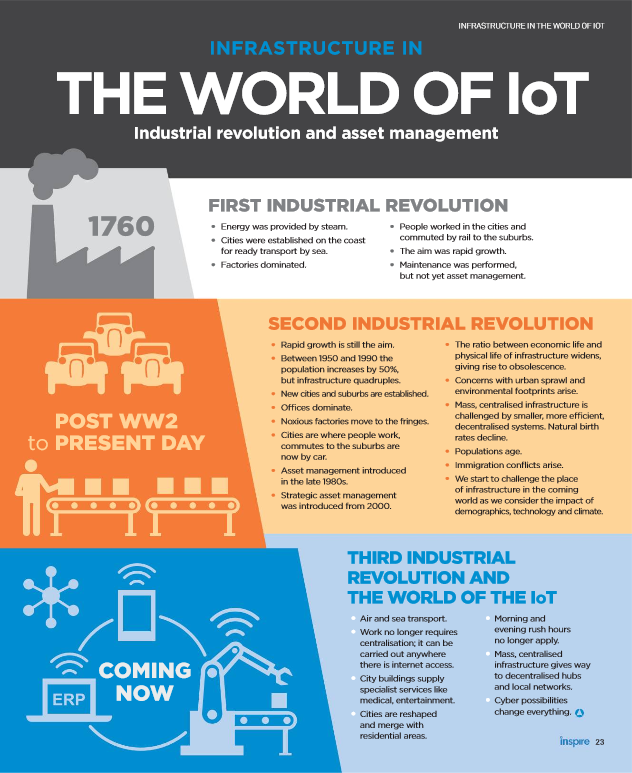First, let us get back to basics. We know that
You are being effective, if your activities achieve the objective or desired outcome. You are efficient when you achieve that objective or desired outcome at minimal cost or effort.
So both effectiveness and efficiency require us to be clear on our objective or‘desired outcome’. And that is where our first problem arises, for an objective never has just one desired outcome.
Consider the following example:

A particularly tricky stretch of road in the Adelaide hills was causing serious safety concerns. The government decided to tackle it. But what was the objective? Reducing the number of accidents was obviously a front-runner because it had been what initiated the action, but it wasn’t the only concern. Traffic speed was also important because a growing number of city workers had been moving to attractive locations in the hills so that anything that slowed down traffic could result in major morning and evening traffic congestion. It tended to be the richer and more influential who could afford a hills location and decision makers were quick to realise that inconveniencing them could provoke an undesirable reaction.
The hills were a major catchment area, which presented environmental considerations. They were also a key tourist destination as well as a main entry point for interstate visitors from the east, which meant that aesthetics, or the general look of the solution, was of concern. Of social consideration was the number of businesses along the route that could become nonviable if the solution required extensive deviations or lengthy road closures. Finally, there was cost.
This is true of any objective. It is a composite of features – things we wish to have (in this case safety, traffic speed) and things we wish to avoid (detrimental effects on the environment, on aesthetics, and on the livelihood of businesses along the route) And all must be accomplished within an available budget.
All members of the government’s decision making group agreed that it was important to reduce accidents, but they had different priorities when it came to the other features.
If you have ever proposed what you considered to be the ‘optimal’ solution only to have it turned down by the board or council, this may well have been the cause – your bundle of features and the importance you gave to each was different from theirs.
How do we deal with this problem?
 We are on the brink of an exciting new phase in Asset Management – in fact the Third Asset Management Revolution!
We are on the brink of an exciting new phase in Asset Management – in fact the Third Asset Management Revolution!
To understand what this is. why it’s important, and where we are going, it pays to understand the first two revolutions, AMR1 (‘where we were’) and AMR2 (‘where we are’). The 3rd AM revolution, AMR3, will take us to where we need to be to meet the demands of the new world we are now moving into – the world of the internet of things.
Asset management was first introduced in the late 1980s, early 1990s. Up until this time, the word was ‘maintenance’ and it focussed on individual asset functionality. ‘Asset Management’ introduced the notion of combining engineering, financial and planning decisions with respect to assets – for the purpose of better services or corporate outcomes. It was centred on the asset portfolio.
Curiously, it all started with concern that we were not spending enough on maintenance!
As early as the 1970s, there was awareness of the problems of under-maintaining infrastructure in the USA. For example, there were the well-documented infrastructure maintenance problems of New York in the mid 1970s where, you may remember, stories started to emerge of pieces of the Manhattan Bridge rusting and falling into the water and potholes in New York’s cement roads being covered over with metal plates, causing havoc for the city’s bus service. In 1988 “The Decaying American Campus”, described in detail the infrastructure decay problems being experienced by tertiary education institutions.
Eventually this culminated in a major federal study of infrastructure requirements in the USA, “Fragile Foundations”. The sheer monetary size of the problem caused a stir in government and professional circles, but it did not lead to action, because it wasn’t ‘action oriented’. The only recommendation to come out of the report was to ‘spend more money’. But Governments then – as now – did not want to spend the many billions, now trillions, of dollars, the report suggested.
… so how did we get from that situation to where we are now? First we had to think ‘management’ rather than ‘funding’. To read more go here
 Welcome to our new Australasian, North American and European visitors and a little background to our site.
Welcome to our new Australasian, North American and European visitors and a little background to our site.
In September 2014, and after twenty years and 400 issues, we ceased publication of Strategic Asset Management, a fortnightly guide for asset management practitioners and policy makers. Many others were now in a better position to continue development of the asset management issues but there was something important that was not being addressed. So we created “Talking Infrastructure”, a not-for-profit organisation, and started this blog.
What is that important thing ? The launch of ISO 55,000 in January 2014 was a milestone in asset management development but, when it comes to goals, we are making assumptions for which there is really little evidence. Asset managers are urged to align their activities to reach their organisational goals. This is very reasonable and indeed there can be no objection. Except that…
As any asset manager can tell you, they often have no idea what the real objectives of their organisations are, for these objectives are frequently so poorly developed, badly expressed and inarticulately communicated, that when it comes to aligning activities, they really have very little guidance.
Estimates of ‘stranded assets’ – assets that are non-functional, or obsolete – vary, but they already run into the billions, and some estimates are in the trillions, of dollars – and all estimates are set to increase in the future if we continue to build infrastructure according to old concepts and principles. To avoid this, we need to rethink the entire role of infrastructure and its place in a future digital world, a world moreover facing significant environmental and demographic challenges.
These challenges are what we describe in The Third Asset Management Revolution.
The action steps resulting are addressed in our post Talking Infrastructure Rationale
Welcome to the future of infrastructure decision making! Ideas appreciated.
 Do ‘efficiency’ and ‘effectiveness’ conflict? Eli Goldblatt, author of the 1983 book ‘The Goal’, which led to the theory of constraints, believes that they do. Goldblatt was a physicist who applied his scientific thinking to manufacturing. (Incidentally, Deming was also a physicist.) In ‘Beyond the Goal’ Goldblatt argues that the objective of every manager is to manage well, but what does it mean to manage well?
Do ‘efficiency’ and ‘effectiveness’ conflict? Eli Goldblatt, author of the 1983 book ‘The Goal’, which led to the theory of constraints, believes that they do. Goldblatt was a physicist who applied his scientific thinking to manufacturing. (Incidentally, Deming was also a physicist.) In ‘Beyond the Goal’ Goldblatt argues that the objective of every manager is to manage well, but what does it mean to manage well?
“To manage well”, he says, “we have to satisfy two different and necessary conditions. One is we must control costs. If we don’t control costs, costs will go too high and we are bankrupt. This is true for a ‘for profit’ organisation and for a ‘not for profit’ organisation. On the other hand, we must protect sales. Sales are the things (products/services) that we promise to the external world. In business, it is the service or product, if you are in the army, then it is what you promise – defence. Do one without the other, you have done nothing.
To control costs where do you start? Where the costs are drained. In every department! So in order to control costs you must judge according to the local impact. But now look at sales, your impact on the wider world. This is not done by one person, because if it was, you wouldn’t need an organisation. If you look at a for profit organisation, for example, you have people who are designing the product, those who are producing, those who are shipping, those who are billing and receiving the money, those who are marketing and getting the customers. If any one of these links drops the ball, sales fall. Sales are achieved through the synchronised effort of all links.
That means that if you want to protect sales, that is, what you are promising to the external world, you can no longer just look at the local impact, because what may be good for one department may be disastrous for another. So to manage well, I must control costs and to control costs I must look to local impacts, but I must also protect my sales and to protect sales there is no way I can just look at local impacts”. – hence conflict.
Now ‘controlling costs’ is what we mean by efficiency, and ‘protecting sales’ is what we understand by effectiveness. So, in business – and in government – we have a conflict.
TWO QUESTIONS TODAY:
Does a similar conflict arise in infrastructure decision making?
If so, how can it be resolved?
 Efficiency is accomplishing something with the least waste of time or effort, or at minimum cost. Effectiveness does not refer to costs but measures instead the extent to which objectives are achieved or problems solved. We are all no doubt familiar with the statement that ‘efficiency is doing the thing right and effectiveness is doing the right thing’. I had an opportunity to observe this in practice over 50 years ago.
Efficiency is accomplishing something with the least waste of time or effort, or at minimum cost. Effectiveness does not refer to costs but measures instead the extent to which objectives are achieved or problems solved. We are all no doubt familiar with the statement that ‘efficiency is doing the thing right and effectiveness is doing the right thing’. I had an opportunity to observe this in practice over 50 years ago.
When I started in economics I was impressed, as were many others at the time, with the notion of Time and Motion study. a business efficiency technique combining the Time Study work of Frederick Winslow Taylor with the Motion Study work of Frank and Lillian Gilbreth. The Gilbreths were famous for their 1950 film Cheaper by the Dozen and I was very excited to be introduced to Mrs Gilbreth, an elegant lady, then well over 80, when she visited our department. Naturally, this encouraged me to further consider time and motion study as a career. And I might well have continued in this direction had I not gone to India the following year.
My host in Bombay (now Mumbei) was very rich by the standards of the time. He owned numerous large apartment houses in the city and several paper mills in Poona. One day he had work to do in his paper mill and asked me if I would like to come along and see it. While he worked in his office I trailed around the factory and was apalled at what I considered to be waste. I put my time and motion study interest to work and mentally catalogued all the many efficiency improvements he could make. I figured he needed less than half of the employees he had. Well, after he finished his work my host introduced me to the staff – and they were all members of his extended family. He considered it his responsibility to take care of them and he was proud that he could provide an income and a good work life for so many. They loved and appreciated him and he was clearly a happy man so I kept my business efficiency improvement ideas to myself! The business may not have been efficient, but if the goal was to maintain his lifestyle whilst caring for others, you might argue it was effective.
TODAY’S QUESTIONS:
How do you interpret efficiency and effectiveness?
Was the Indian Mill Owner effective in your book?
Could he have been both efficient and effective?
Is there a conflict between efficiency and effectiveness in your own business?

Remains of Island Lagoon Tracking Station
In the early 1960s, I worked at the Island Lagoon Satellite Tracking Station at the Woomera Rocket Range, a large Australian Defence Force aerospace set up as a series of individual satellite stations, each of which was located more than the blast distance of the then known bombs from each other, so that any attack could only take out one at a time. This was an understandable and sensible security precaution at the time but for staff it lent itself to hours of travel over empty and dusty red gibber plains if you wanted to move between stations. No doubt it would have been more ‘efficient’ to aggregate the stations, that is it would have been cheaper in both capital and labour costs, but from the perspective of security, this was the more ‘effective’ solution.
Hamburgers and Blackouts (April 24), considered how, in the past, we strove to enlarge and integrate our electricity infrastructure and infrastructure networks in the name of efficiency, but how this has placed us at risk. New technology now provides more options. Which brings us to microgrids.
A Microgrid is a localized group of electricity sources and loads that may operate connected to and synchronous with either the traditional centralised electrical grid or with other microgrids but may equally function autonomously as physical, security or economic conditions dictate. Microgrids enable a focus on both physical and cyber security for military facilities and assure reliable power without relying on the macrogrid but they also have commercial applications. There are many manufacturing processes in which an interruption of the power supply may cause high revenue losses and long start-up time and last year a NSW farmer was reported to have withdrawn from the grid and now uses only solar power with backup to support his electric cattle fences because the macrogrid failed to provide him the continuity he needed. In South Australia the Fluid Solar House at Elizabeth is a 4 storey building with office and research facilities that is completely off-grid using a water-based heating and cooling system incorporated in the building’s ceilings and floors at less than half the cost of a commercial air-conditioning plant. Low cost housing is now being built using the same technology.
With new options comes the necessity to re-think old solutions – but also old objectives. Efficiency might have once been our touchstone. Should it be so now?
 In discussion the other day we were considering the value of blogs. My companion rated them rather low since it was impossible, he said, to know the credibility of the writer whose opinions were being presented. A natural contrarian, I queried whether opinion, as distinct from fact, really needed to be backed by credibility. Surely, I said, the value of an opinion was to be found in the ideas it generated in the mind of the reader, so that, in a sense, the credibility of the writer was irrelevant. Even an opinion you reject can spark ideas when you consider why you have rejected it. Of course, if the idea was to adopt the opinions of the writer as your own, knowing the writer’s credibility would indeed be important.
In discussion the other day we were considering the value of blogs. My companion rated them rather low since it was impossible, he said, to know the credibility of the writer whose opinions were being presented. A natural contrarian, I queried whether opinion, as distinct from fact, really needed to be backed by credibility. Surely, I said, the value of an opinion was to be found in the ideas it generated in the mind of the reader, so that, in a sense, the credibility of the writer was irrelevant. Even an opinion you reject can spark ideas when you consider why you have rejected it. Of course, if the idea was to adopt the opinions of the writer as your own, knowing the writer’s credibility would indeed be important.
Then again, what constitutes credibility? Academic position? Prominent position? Years of Experience? High IQ? When they started, our leading entrepreneurs today had none of these. But their ideas worked!
Then over the weekend I was listening to Dan Sullivan’s “Pure Genius” and he had something to say on this subject. He spoke of people as being “A” people – those who did not have opinions of their own but read widely and carefully and adopted the opinions of others. “B” people as those who did have their own opinions but did not take responsibility for them and blamed the world for not being what they thought it should be, “C” people, he said, were those who did take responsibility for their opinions and used them to create value and make money for themselves – entrepreneurs. “D” people were those rare people who not only took responsibility for their opinions in order to make money for themselves but also sought to share their knowledge with others.
To my mind a blog is useful in that, in today’s busy world, it presents ideas in small ‘bite-sized’ pieces for further reflection; enables easy feedback (in a way that, e.g., reading a book, doesn’t); can encourage collaborative conversation; it can build up a complex idea in small easy steps with time between posts to provide scope for reflection.
Your take? Pros and Cons of blogs?
 No new posts this week. I am in Perth for our second City Chapter meeting. Posts will resume next week.
No new posts this week. I am in Perth for our second City Chapter meeting. Posts will resume next week.
In the meantime feel free to comment on any existing post.
Penny
Thanks to the graphics team at IPWEA Inspire for their contribution to our graphic.

The article by Penny Burns and Jeff Roorda “The Third AM Revolution” of which this is part, can be found here
 There is an economic principle called ‘diminishing returns’. This says, in effect, that your first hamburger is great, the second OK, but by the time you are on to your third and fourth, the returns in terms of enjoyment and allaying hunger are greatly diminished. Continue and the returns will eventually become negative. Of course, long before you become physically ill, the benefit:cost ratio will itself have become negative. This does not only apply to hamburgers. It applies to everything, including our policy settings. For a while the benefit of the new policy outweighs the disadvantages – until it doesn’t. We often fail to see the change because we are always looking backwards – justifying our current actions by the gains we have already made, and asssuming that these gains will continue.
There is an economic principle called ‘diminishing returns’. This says, in effect, that your first hamburger is great, the second OK, but by the time you are on to your third and fourth, the returns in terms of enjoyment and allaying hunger are greatly diminished. Continue and the returns will eventually become negative. Of course, long before you become physically ill, the benefit:cost ratio will itself have become negative. This does not only apply to hamburgers. It applies to everything, including our policy settings. For a while the benefit of the new policy outweighs the disadvantages – until it doesn’t. We often fail to see the change because we are always looking backwards – justifying our current actions by the gains we have already made, and asssuming that these gains will continue.
Consider that over the last several decades we have made great efficiency gains in infrastructure services such as electricity production and distribution by increasing the size of our production units and integrating our networks. There was a period (up to about the late 1980s) when it was always more efficient to build a new plant rather than renew an ageing one because technological improvements were increasing boiler size resulting in vastly reduced capital costs and considerable savings in labour.
Eventually two things happened. The technological gains slowed down. And risks increased. For one thing, if you can satisfy demand with 6 units of a given size, should one fail you have lost 1/6th of your total output. But when the size of units increases to the stage where total demand can be satisfied by just 3 units, then failure of just one unit reduces your capacity to serve by 33%. Gains slow down, risk costs rise. We can see a similar pattern in the integration of networks. Initially the gains are great, and obvious. We do more integration and we get further gains. But the more individual networks that are connected the greater the risk that an accident in, or mismanagement of, any link in the chain will have flow on effects to the others.
And so we get events such as the 2003 major blackout of the NorthEast of America which extended into Canada and, closer to home, the 2016 widespread power outage in South Australia that occurred as a result of storm damage to electricity transmission infrastructure. The cascading failure of the electricity transmission network resulted in almost the entire state losing its electricity supply. To add to our worries are recent accounts of Russian hacking into US nuclear power plants.
So big is not necessarily beautiful. But what’s the alternative?

Recent Comments